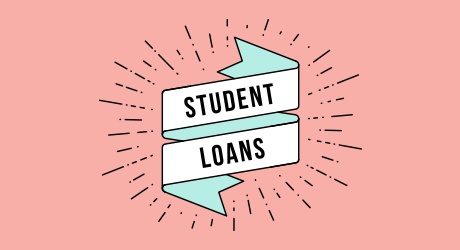Nearly three in four students across the United States graduate from college with student loan debt, and around 60 percent of them don’t expect to fully pay off these loans until they’re in their 40s. So, if you’re currently managing the challenges of student loans repayment, you’re certainly not alone. Paying off student loans isn’t fun, but it can be easier – and more affordable – with the right repayment plan. To learn more about what kinds of repayment plans are available and which could be a good choice for you, read on.
Standard Repayment Plan
A standard student loan repayment plan involves paying the same amount of money every month for a period of 10 years; or 120 total payments. This is the default plan when repaying student loans from the federal government, and it begins six months after you graduate.
The standard plan offers a number of advantages. Your monthly interest rate is typically lower than what you’d get with other repayment plans, and assuming you keep up with your monthly payments, you can rest assured that your loans will be completely repaid in 10 years
However, before choosing the standard plan, there are few key questions to consider. How much are your set monthly payments, and are you confident that you will be able to make them every month for the next decade? Do you foresee any potential obstacles to regular payments, such as concerns around career instability or upcoming medical costs?
Once you’re confident that a standard repayment plan is right for you, make your life easier by automating your payments. HUECU offers Automatically Recurring Payments for some account holders, which even comes with a 0.25% interest rate discount – so you’ll be paying less money, and have one less thing to think about every month.
Income-Based Plan
If you’re concerned about making fixed monthly payment, look into a more flexible, income-based repayment plan that can adjust to your individual career and earning situation at different points in time.
One example is the REPAYE program from the federal government, which stands for “Revised Pay As You Earn Repayment Plan.” If you choose the REPAYE program, your monthly student loan payments will never be higher than 10 percent of your discretionary income, which is defined as your adjusted gross income minus the federal poverty line. The REPAYE plan lasts for 20 years, or 25 years if you are also paying off loans from graduate school. After that, remaining balance is forgiven.
While REPAYE and similar income-based repayment plans can be a good option for people who can’t afford monthly payments under a standard plan, the extended length of the repayment schedule means that in the end, you will be paying a good deal more interest – so consider your options carefully before selecting this sort of repayment plan.
Public Service Loan Forgiveness
The federal government has a special opportunity for student loan borrowers who go on to work for a government or non-profit organization – pay off your loans for 10 years, then have your remaining debt forgiven. The Public Service Loan Forgiveness Program (PSLF) was created in 2007, meaning that last year was the first time eligible candidates could apply for loan forgiveness.
Unfortunately, it’s currently unclear how effective the program will be at assisting borrowers who work in the public service. A recent CNN investigation indicated while around 7,500 people applied for forgiveness in 2017, fewer than 1,000 were accepted; and some borrowers have even filed lawsuits. Therefore, while the program may prove useful in the future, be aware of the risks before hinging any repayment plans on this program.
Refinance or Consolidate
If your financial situation has changed since you began paying off your loans, you might want to alter your repayment plan. Refinancing or loan consolidation can be a good way to lower your monthly payments or simply reduce the hassle of paying multiple bills every month. You might be able to consolidate multiple federal or private loans into a single loan with new terms, which means you can change your repayment terms or monthly interest rate – for example, by shortening the length of the loan, you might get a better interest rate and pay off your student loans sooner.





